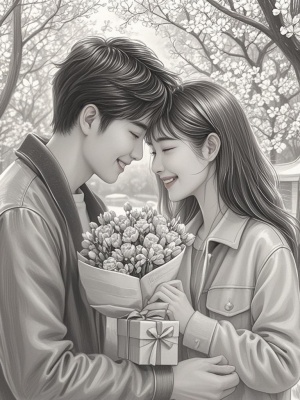The Art of Nature Pencil Sketch Drawing: A Comprehensive Guide
Introduction
Nature pencil sketch drawing is a timeless art form that captures the beauty of the natural world with simple yet expressive strokes. Whether you're a beginner or an experienced artist, mastering this technique can enhance your artistic skills and deepen your appreciation for nature. In this guide, we'll explore the essentials of nature pencil sketch drawing, from selecting the right materials to advanced shading techniques.
Essential Tools for Nature Pencil Sketch Drawing
Choosing the Right Pencils
The foundation of any great nature pencil sketch lies in the tools you use. Graphite pencils come in various grades, from hard (H) to soft (B). For nature sketches, a range of pencils (e.g., 2H, HB, 2B, 4B) is ideal. Hard pencils (H) are perfect for fine details like leaves or tree bark, while soft pencils (B) excel in shading and creating depth.
Paper Selection
Not all paper is created equal for pencil sketching. A medium-textured paper (around 90-110 lb) works best for nature sketches. It provides enough tooth to hold graphite while allowing smooth shading. For more detailed work, consider using a specialized sketchbook designed for pencil artists.
Techniques for Capturing Nature's Essence
Observation and Composition
The key to successful nature pencil sketch drawing lies in careful observation. Before putting pencil to paper, spend time studying your subject. Notice the play of light and shadow, the textures, and the overall composition. A well-composed sketch often follows the rule of thirds, placing key elements at intersecting points for visual balance.

Shading and Texture Techniques
Nature is full of diverse textures, from smooth water surfaces to rough tree bark. Mastering different shading techniques is crucial:
- Hatching: Parallel lines for basic shading
- Cross-hatching: Layered lines for deeper shadows
- Stippling: Dots for textured surfaces like rocks
- Blending: Smooth transitions for skies or water
Common Challenges and Solutions
Problem: Flat-looking Landscapes
Many beginners struggle with creating depth in their nature pencil sketches. The solution lies in atmospheric perspective - making distant elements lighter and less detailed. Foreground elements should have darker values and sharper details.
Problem: Unrealistic Trees and Foliage
Trees often appear as green blobs in amateur sketches. Study how leaves cluster and how light filters through branches. Start with the basic shape, then add texture gradually. For more guidance, check out our AI painting guide which includes nature elements.

Advanced Tips for Nature Sketching
Once you've mastered the basics, consider these advanced techniques:

- Negative space drawing: Focus on the spaces between branches
- Seasonal variations: Capture how nature changes through seasons
- Weather effects: Depict rain, mist, or sunlight in your sketches
Conclusion
Nature pencil sketch drawing is a rewarding artistic practice that connects us with the natural world. By mastering fundamental techniques and continually observing nature's details, you can create stunning artworks that capture the essence of landscapes, flora, and fauna. Remember, like any skill, improvement comes with practice. For more artistic inspiration, explore our landscape scenes collection or learn about transforming observations into art.
For further reading on traditional drawing techniques, consider visiting authoritative sources like Tate Museum's art resources or The Metropolitan Museum of Art's educational materials.